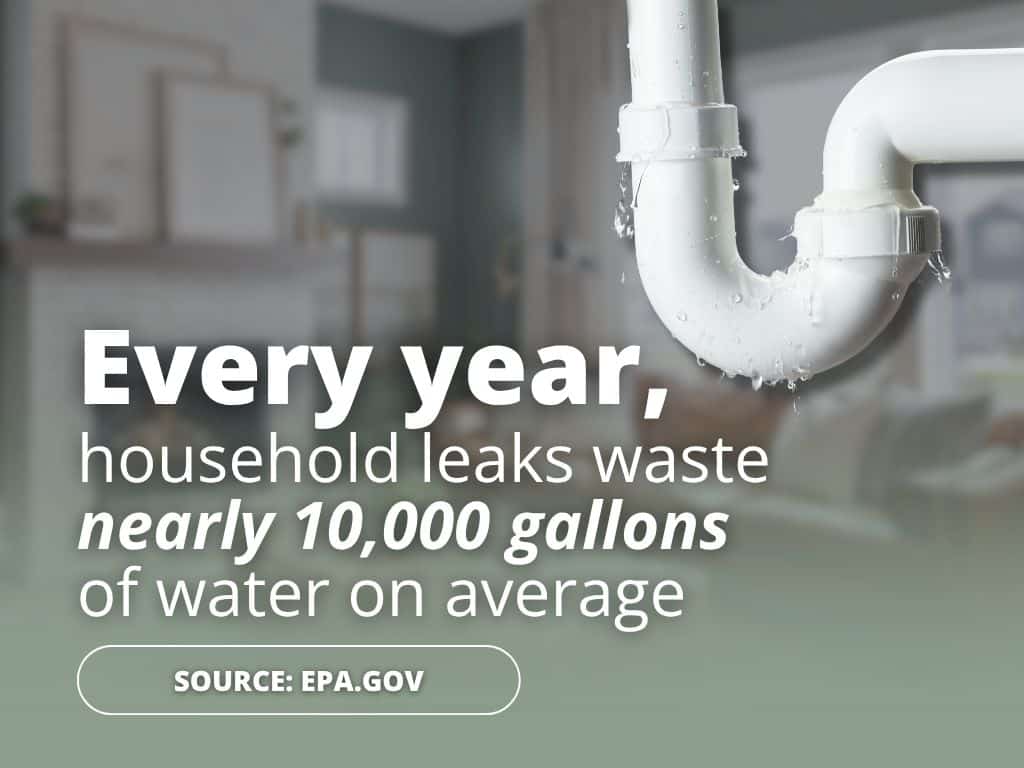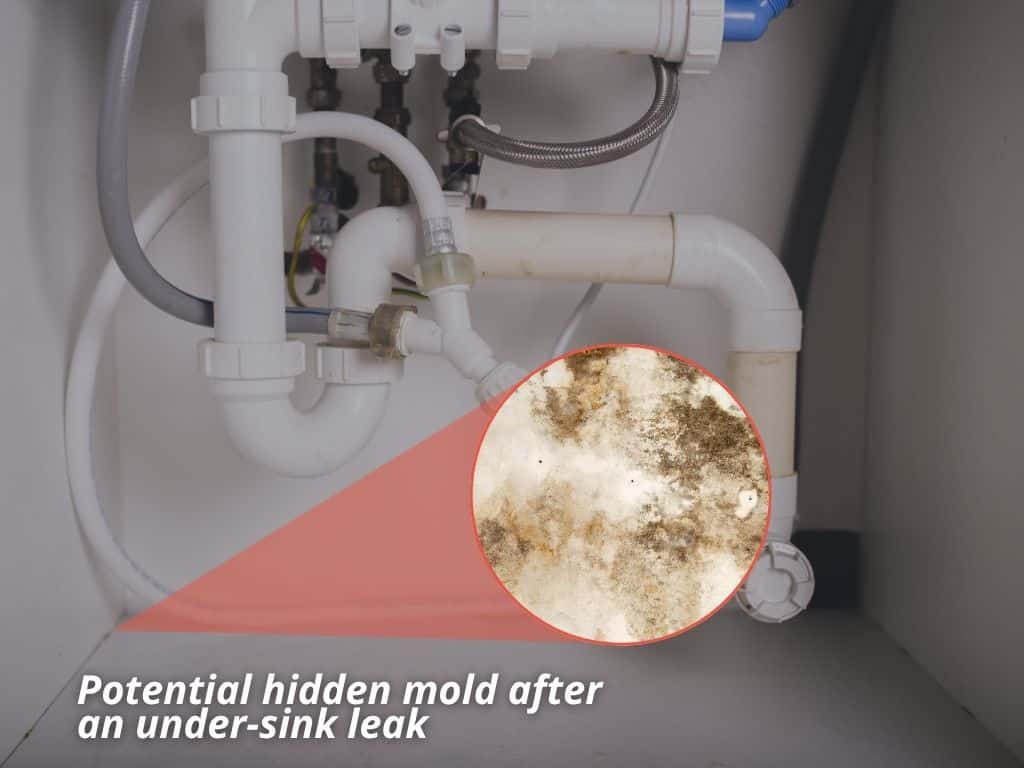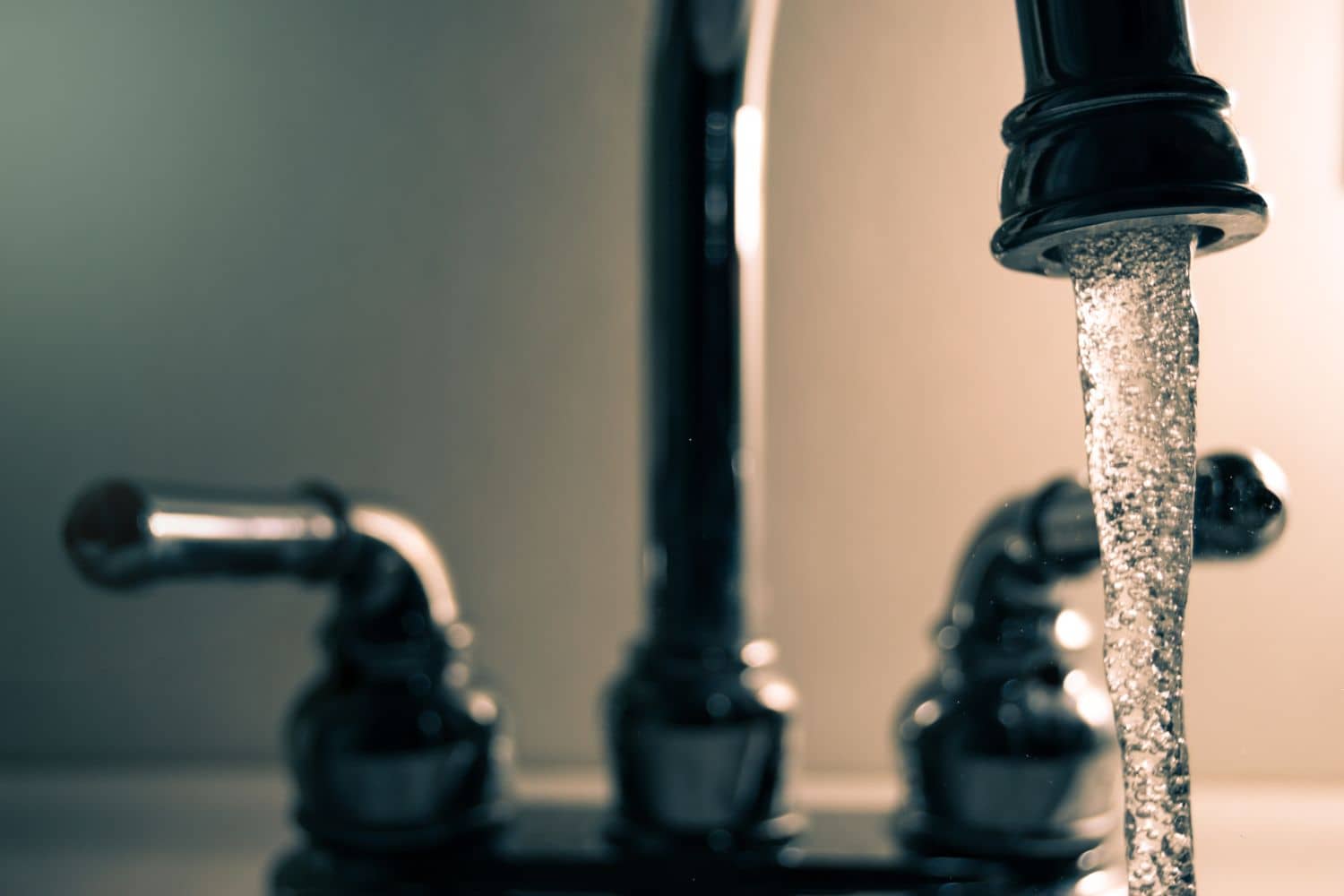The plumbing under your sink might seem out of sight and out of mind, but even small flaws such as leaks, corrosion, or poor pipe setups can lead to serious damage over time. In Central Florida, where humidity and mineral-heavy water cause faster wear, sink plumbing is especially prone to trouble.
This guide walks through the most common sink plumbing defects, how inspectors identify them, what causes them, and what you can do to prevent expensive repairs.
Table of Contents
ToggleSink Plumbing Matters More Than Most Realize
Your sink plumbing handles gallons of water daily. Any weakness in the system can cause moisture buildup, mold growth, or even hidden structural damage.
According to the Environmental Protection Agency (EPA), household leaks waste nearly 10,000 gallons of water every year on average.
Many of those leaks begin under kitchen and bathroom sinks, where loose fittings or small cracks often go unnoticed.
In Florida’s warm, humid climate, a drip that lingers for weeks can quickly lead to warped cabinets or mold problems.
1. Leaking or Corroded Pipes
Leaks are among the most common plumbing issues inspectors find. Over time, pipes can corrode or loosen from repeated use and vibration.
Common causes include:
- Worn-out seals or gaskets
- Loose fittings around P-traps or tailpieces
- Corrosion from hard water or harsh cleaners
- Movement in plumbing lines due to poor installation
Even a small leak can damage cabinetry or flooring. Inspectors often use moisture meters to detect hidden water behind baseboards or beneath cabinets.
Check under your sink regularly. If you see green or white corrosion, rust spots, or damp areas around joints, call for a repair before it spreads.

2. Improper Drain Trap Installation
The P-trap under your sink prevents sewer gases from entering your home. When it’s installed incorrectly, it can cause slow drainage, odors, or leaks.
Typical inspection issues include:
- Traps installed at the wrong angle or height
- Use of outdated S-traps that are no longer code-compliant
- Missing clean-outs for maintenance
- Poor venting or a slope that prevents proper drainage
Florida standards require traps to hold a water seal and be properly vented to block gases. Inspectors often find outdated trap designs in older homes around Central Florida.
If your sink smells bad or drains slowly despite being clear, the trap might need reinstallation or venting adjustments.
3. Cross-Connections and Air Gaps
Cross-connections occur when dirty water mixes with clean water lines, which can create a health hazard called backflow.
Florida requires air gaps or vacuum breakers for appliances like dishwashers and sprayers to prevent contamination. Without them, wastewater could flow back into your sink or water supply.
Inspectors often find cross-connections under kitchen sinks when appliances are replaced or remodeled without proper backflow prevention.
Make sure your dishwasher drain hose loops up under the counter or connects to an air gap above the sink rim.
4. Clogged or Undersized Drain Lines
Drain lines naturally collect buildup from soap, grease, and debris. Smaller or outdated pipes make clogs more frequent.
The Uniform Plumbing Code recommends at least a 1¼-inch drain for bathroom sinks and a 1½-inch drain for kitchen sinks. Anything smaller can cause slow drainage or gurgling sounds.
Inspectors often test drain performance by running water for several minutes to look for backups or slow flow.
Avoid using chemical drain cleaners, which can damage PVC pipes. If you have frequent clogs, an inspection can confirm if your drain lines are undersized or improperly sloped.
5. Loose or Leaking Shut-Off Valves
Each sink should have separate hot and cold shut-off valves. These allow quick water shutoff if a leak develops.
In older Florida homes, shut-off valves often corrode or seize. Inspectors frequently find valves that leak around the handle or fail to close completely. The American Society of Home Inspectors (ASHI) notes that defective shut-offs are among the most common minor plumbing findings.
Turn your shut-off valves quarterly to ensure they move freely. Replace them if they drip or stick.
6. Poorly Sealed Sink and Countertop Connections
When sink caulking cracks or wears away, water seeps between the basin and countertop. That hidden moisture can cause wood swelling, discoloration, or mold.
Inspectors often find warped countertops and soft wood around sink rims in Florida homes due to dried or missing caulk.
Remove and replace worn sealant with mildew-resistant silicone once a year, especially in bathrooms or kitchens with high humidity.
7. DIY Plumbing and Mismatched Materials
Quick fixes under the sink sometimes lead to bigger issues later. Using the wrong pipe materials or connectors can cause leaks or corrosion.
For example, mixing copper and galvanized steel without proper fittings creates galvanic corrosion, which quickly eats away at metal.
The National Association of Home Builders (NAHB) recommends using materials approved by your local building code and ensuring all fittings match in size and composition.
If you’ve performed any DIY plumbing, schedule an inspection to confirm compliance and prevent long-term damage.
8. Hidden Leaks from Supply Lines
Flexible supply lines that connect to your faucet can crack or loosen, especially if made of rubber. Inspectors often find slow leaks behind stored cleaning supplies or trash bins.
Replacing older rubber or plastic supply lines with stainless steel versions can significantly reduce leak risk.
Wipe your cabinet base with a paper towel every few weeks. If it comes back damp, you may have a hidden leak.
9. Water Pressure Problems
Incorrect water pressure can cause stress on fittings and pipes. High pressure leads to bursts or leaks, while low pressure signals buildup or blockages.
The EPA’s WaterSense program recommends pressure between 40 and 60 psi. Anything above 80 psi can shorten the lifespan of your plumbing system. Inspectors use pressure gauges to confirm proper flow and safe pressure ranges.
Install a pressure regulator if your water consistently runs too strong, especially if your home is connected to city supply.
10. Mold and Moisture from Plumbing Issues
In Florida, humidity is the biggest factor in plumbing deterioration. Small leaks create damp spaces ideal for mold growth.
The Florida Department of Health recommends repairing leaks within 48 hours and maintaining indoor humidity below 60 percent to prevent mold.
Inspectors use infrared cameras to identify wet areas beneath sinks or behind walls. Identifying leaks early can save thousands in remediation and cabinetry repairs.

When to Involve an Inspector
If you notice persistent plumbing problems or plan to sell or purchase a home, it’s time to bring in an inspector. A professional inspection gives you a full picture of the plumbing system’s health, from visible defects to hidden damage.
Tier-1 Pro Inspections offers comprehensive plumbing evaluations across Central Florida as part of their home inspection services. Their trained inspectors check every accessible connection, test for leaks, and identify problems that homeowners or plumbers might overlook.
Hiring an inspector is especially valuable when:
- You’re preparing to buy or sell a home and need a full systems report
- You’ve had recurring leaks or drainage issues despite recent plumbing repairs
- You suspect hidden damage inside walls, flooring, or cabinetry
- You want to document your home’s plumbing condition for insurance or renovation purposes
An inspection can reveal potential moisture damage, code violations, or installation errors before they become expensive to fix. Tier-1’s detailed reports help homeowners make informed decisions and take preventive action early.
Other Related Questions
Can sink leaks lead to mold problems?
Yes. Constant moisture under sinks creates an ideal environment for mold growth. Tier-1’s team often recommends pairing a plumbing inspection with a moisture or air quality evaluation to ensure your home stays healthy.
Does a home inspection cover bathroom and kitchen sinks?
Yes. A standard inspection from Tier-1 includes visual checks of all accessible fixtures, drains, valves, and supply lines. You can also request a more detailed plumbing review if you suspect specific problems.
What other home systems should I have checked along with plumbing?
Since water problems can affect multiple areas, it’s smart to have the roof, attic, electrical, and HVAC inspected at the same time. Tier-1 offers combined packages so you can catch related issues like poor ventilation, attic moisture, or drainage problems in one visit.
Conclusion
Sink plumbing may seem simple, but small issues often cause the biggest damage. From leaking valves to corroded traps, even minor defects can lead to water waste, mold, or structural damage.
When you need a thorough evaluation, schedule an inspection with Tier-1 Pro Inspections. Their licensed team serves Central Florida homeowners and agents with comprehensive plumbing and full-home inspection services that identify risks early and help you protect your property long-term.

